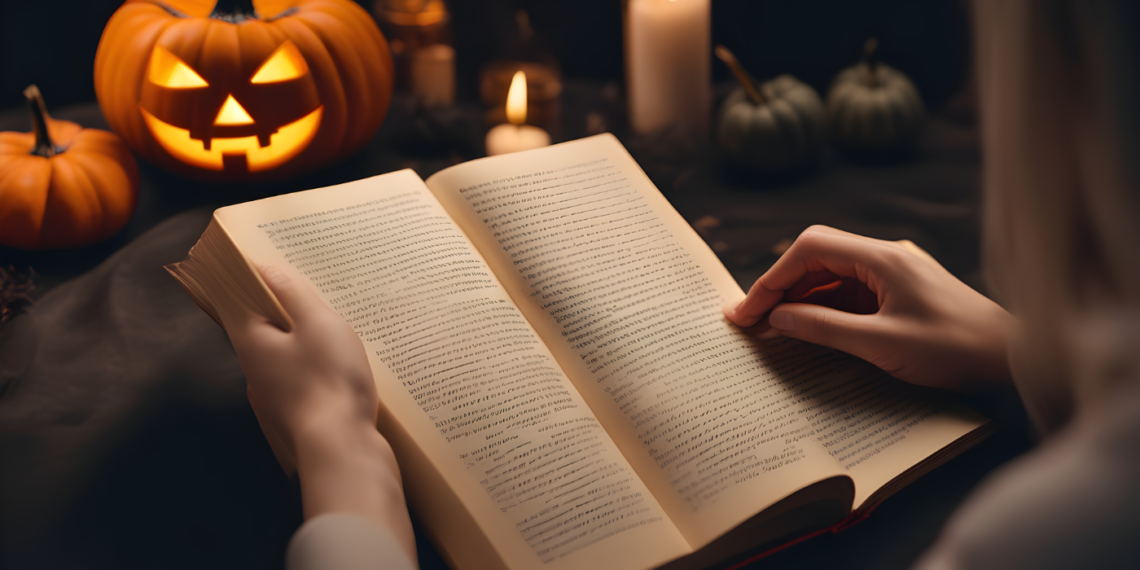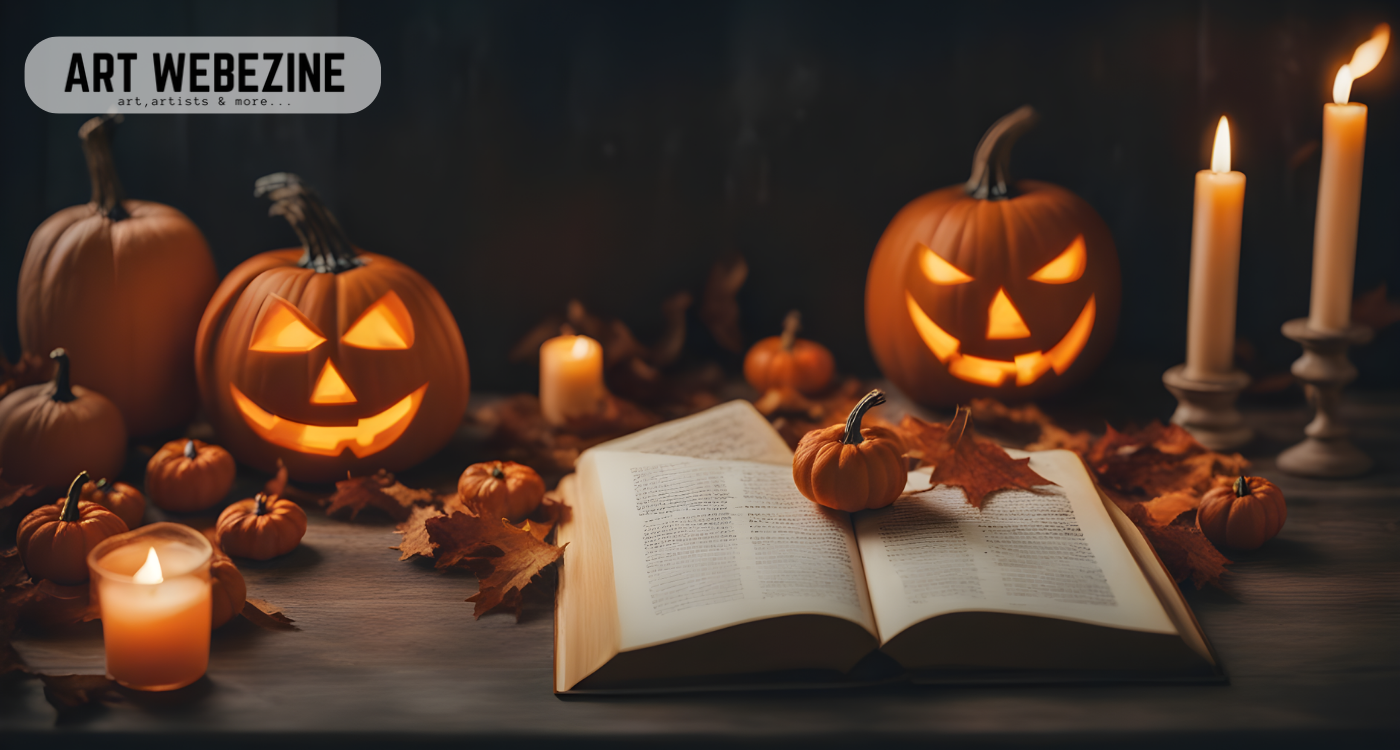Halloween, a widely celebrated holiday, carries with it a rich history that often remains shrouded in mystery. Many of us may wonder about the origins of this beloved tradition, and the significance it holds in our culture. By exploring Halloween history, we can uncover the fascinating tales behind the customs and rituals that have endured through the ages. In this blog post, we will explore the mysterious world of Halloween history, focusing specifically on the mysterious practice of trick or treating, and how books can be an invaluable resource in unlocking the secrets of this hauntingly delightful holiday. So, let us begin on a journey of discovery, as we unravel the history or mystery of Halloween.
What is Halloween?

Halloween is a popular holiday celebrated in many parts of the world, especially in North America and some European countries, on the night of October 31st. It is a time when people engage in various traditions and activities that often involve dressing up in costumes, trick-or-treating, attending parties, and decorating homes with spooky themes. Halloween is known for its association with the supernatural, including ghosts, witches, and other eerie elements.
The holiday has its origins in ancient Celtic traditions, particularly the festival of Samhain, which marked the end of the harvest season and the beginning of winter. The Celts believed that during Samhain, the boundary between the living and the dead was thin, allowing spirits to roam the earth. Bonfires were lit, and costumes were worn to ward off these spirits.
Over time, Halloween evolved and absorbed influences from various cultures, including Christian traditions. November 1st became All Saints’ Day, a day to honour all saints, and the evening before, October 31st, became known as All Hallows’ Eve, eventually giving rise to the name “Halloween.”
Today, Halloween is a festive holiday where people of all ages engage in a mix of activities. Children dress up in costumes and go from house to house, saying “trick or treat” to receive candies and treats. Adults often participate in costume parties and events. Decorations include carved pumpkins known as jack-o’-lanterns, which are often adorned with spooky faces. The holiday has also inspired a wide range of Halloween-themed books, movies, and decorations.
Halloween is a time for fun, creativity, and a bit of spookiness, as people come together to celebrate a holiday with deep historical and cultural roots.
What is The Mystery Behind Halloween?
Halloween, celebrated on October 31st, has a history rooted in ancient Celtic traditions. Its origins can be traced back to the Celtic festival of Samhain, which marked the end of the harvest season and the beginning of winter. The Celts believed that during Samhain, the boundary between the living and the dead was at its thinnest, allowing spirits to roam the Earth. To ward off these spirits, the Celts lit bonfires and wore costumes made from animal heads and skins.
The Christian church later incorporated elements of Samhain into its calendar. November 1st was designated as All Saints’ Day, a day to honour all saints, and the evening before, October 31st, became All Hallows’ Eve. This merging of Samhain and All Hallows’ Eve marked the beginning of the transition from ancient Celtic traditions to what we now recognize as Halloween.
Over time, Halloween evolved into a holiday that embraced a combination of traditions from various cultures and communities, including Irish and Scottish immigrants in America. It became a time for dressing in costumes, carving pumpkins into jack-o’-lanterns, and going door to door for trick-or-treating.
Today, Halloween is celebrated with a mix of ancient customs and modern traditions. It has become a holiday known for costumes, candy, spooky decorations, and a sense of fun and excitement. Its history is a reflection of the way cultures evolve and adapt over time, and it continues to be a holiday that captivates people of all ages.
Why is it Important to Learn about The History of Halloween?
Learning about the history of Halloween is important for several reasons:
- Cultural Awareness: Understanding the origins of Halloween allows us to appreciate the cultural significance of the holiday. It provides insight into how different cultures have contributed to the holiday’s development and how it has evolved over time.
- Appreciating Traditions: Knowing the history of Halloween helps us understand the significance of various traditions associated with the holiday, such as costumes, jack-o’-lanterns, and trick-or-treating. It adds depth and meaning to these customs.
- Connecting with the Past: Halloween’s history is like a window into our past. It allows us to connect with the traditions and beliefs of our ancestors and gain a better understanding of the cultural context in which the holiday emerged.
- Educational Value: Learning about Halloween’s history can be an engaging and educational experience for people of all ages. It provides an opportunity to explore history, folklore, and the evolution of traditions in an entertaining way.
- Appreciating Modern Celebrations: Understanding the historical roots of Halloween helps us appreciate the modern-day celebrations and festivities. It explains why we celebrate Halloween the way we do and the significance of various elements of the holiday.
- Inspiration for Creativity: Halloween history can be a source of inspiration for creative endeavours, such as writing Halloween books, crafting costumes, or decorating for the holiday. Knowing the background of Halloween can help individuals infuse more meaning and authenticity into their creative expressions.
Learning about the history of Halloween is not just about delving into the past; it’s a way to connect with our cultural heritage, appreciate the traditions that make the holiday special, and gain a deeper understanding of the significance of Halloween in our lives today. It enriches our appreciation of this beloved holiday and its enduring impact on our culture.
When was Halloween Invented?
The history of Halloween is a captivating journey that unveils the holiday’s ancient origins, the intriguing evolution of its traditions, and the significant commercialization it has undergone over time. Let’s delve deeper into each of these aspects to gain a more comprehensive understanding of the holiday’s rich history.
Halloween’s roots can be traced back to the ancient Celtic festival of Samhain. Samhain was a pivotal celebration marking the end of the harvest season and the onset of winter. For the Celts, it held deep significance as they believed that during this time, the veil separating the world of the living from the realm of the dead grew remarkably thin. This phenomenon allowed spirits and otherworldly entities to traverse freely among the living. To ward off these potentially mischievous and malevolent spirits, the Celts lit bonfires and donned costumes made from animal heads and skins, a practice that forms the very bedrock of modern Halloween traditions.
The Evolution of Halloween Traditions Over Time
The history of Halloween is punctuated by a series of transitions. With the spread of Christianity, Samhain was gradually incorporated into the Christian calendar. November 1st was established as All Saints’ Day, a day dedicated to venerating all saints, and the night preceding it, October 31st, was termed All Hallows’ Eve. This confluence of pagan and Christian customs marked the shift from ancient Celtic celebrations to the Halloween that we recognize today.
Halloween’s traditions continued to adapt as it journeyed to America, where it encountered the influence of various immigrant communities. Notably, the Irish and Scottish immigrants brought with them their cherished customs, further enriching the holiday’s tapestry. The blending of cultural practices in the United States gave rise to modern American Halloween, characterised by its emphasis on creative costumes, the exchange of candies, and the adornment of homes with eerie decorations.
The Commercialization of Halloween
In more recent times, Halloween has experienced substantial commercialization. It has evolved from a simple, community-oriented holiday into a lucrative industry encompassing a wide array of products and services. From elaborate costumes and intricately designed decorations to immersive haunted attractions and themed parties, Halloween has become a significant economic force.
While the commercialization of Halloween has brought a plethora of exciting and diverse offerings to the table, it has also sparked discussions about preserving the holiday’s authentic spirit. Some argue that the focus on consumerism threatens to overshadow the original essence of Halloween, which was deeply rooted in ancient customs, community gatherings, and an exploration of the supernatural.
The history of Halloween is a compelling narrative of cultural amalgamation, evolving traditions, and the ever-increasing influence of commerce. Understanding this multifaceted history allows us to appreciate the holiday’s intricate tapestry, where the ancient past merges with the contemporary present, creating a beloved and enigmatic celebration enjoyed across the globe.
What is The Best Book about The History of Halloween?

When it comes to learning about the captivating history of Halloween, there’s no shortage of excellent books that can transport you through time and offer insights into the origins, traditions, and symbolism of this beloved holiday. If you’re curious about Halloween history, here are some recommended reads to delve into:
The Book of Hallowe’en by Ruth Edna Kelley (1919): This classic book is a treasure trove of Halloween history. Ruth Edna Kelley takes you on a journey from the holiday’s ancient Celtic roots to its vibrant modern-day celebrations. With a keen eye for detail, Kelley delves into everything from the symbolism and traditions of Halloween to the evolution of costumes and the delectable treats that have become synonymous with the holiday.
Death Makes a Holiday: A Cultural History of Halloween by David J. Skal (1993): For those intrigued by the darker side of Halloween, David J. Skal’s book is an eye-opening exploration of the holiday’s deep connections to witchcraft, the occult, and the supernatural. Skal takes readers on a mesmerising journey, dissecting how Halloween has served as a reflection of societal and cultural anxieties throughout history.
Trick or Treat: A History of Halloween by Lisa Morton (2003): Lisa Morton offers a comprehensive overview of Halloween history, covering its origins, traditions, and commercialization. From the ancient customs that laid the foundation for the holiday to the ever-evolving world of Halloween costumes, Morton’s book provides a well-rounded understanding of the holiday’s multifaceted history.
Halloween: From Pagan Ritual to Party Night by Nicholas Rogers (2002): Nicholas Rogers takes readers on a historical voyage, examining the transformation of Halloween from its pagan roots into a secular holiday. Rogers delves into the intricate evolution of the holiday’s traditions and symbols, shedding light on how they’ve been adapted and reinterpreted over centuries.
Halloween: An American History by Lesley Bannatyne (1998): For a closer look at Halloween’s development in the United States, Lesley Bannatyne’s book offers a compelling narrative. She explores the early colonial celebrations of Halloween and traces the holiday’s path to modern-day commercialization. Bannatyne also delves into how Halloween has been used as a vehicle for promoting American values and culture.
These books serve as fantastic resources for those curious about Halloween history. They offer in-depth examinations of the holiday’s roots, its evolution through time, and its cultural significance. So, whether you’re a history enthusiast or simply looking to appreciate Halloween’s rich heritage, these books provide a window into the enchanting world of All Hallows’ Eve. Explore the pages and unlock the mysteries of Halloween’s past for a deeper understanding of this timeless celebration.
Conclusion
In conclusion, discovering into the history of Halloween and uncovering the origins of trick-or-treating can be an intriguing adventure. Books provide a valuable resource for those seeking to understand the traditions and customs associated with this holiday. By exploring the pages of these literary works, readers can gain a deeper appreciation for the mysteries and history behind trick or treat. So, whether you’re a curious student or an avid history buff, don’t hesitate to pick up a book and embark on a journey to unravel the captivating story of Halloween’s most beloved tradition.






